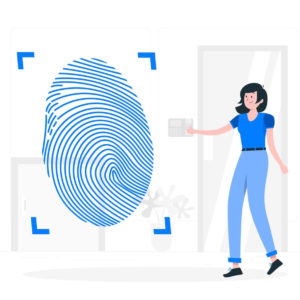
06 Aug Implementing Facial Clocking Time Clocks: Benefits and Drawbacks
Implementing Facial Clocking Time Clocks: Benefits and Drawbacks
In recent years, businesses have been on the lookout for modern methods to improve productivity and reduce time theft. One solution that has seen rapid adoption is the use of facial recognition technology in time clocks, also known as facial clocking time clocks.
These systems are designed to streamline the attendance tracking process and reduce the risk of fraud, but like any technology, they have both benefits and drawbacks. In this article, we’ll delve into the world of facial clocking time clocks, discussing how they function, their pros and cons, and steps to implement them in your workplace.
What is Facial Clocking Time Clocks
Facial clocking time clocks utilize facial recognition technology to identify employees. They compare a scan of an individual’s face with stored facial data to ensure the right person is clocking in or out.
This sophisticated system tracks arrival and departure times, lunch breaks, and overtime with high accuracy. They are particularly effective in preventing “buddy punching,” a common fraudulent practice where an employee clocks in or out for a colleague.
Also Read: What are biometric time clocks?
Benefits of Facial Clocking Time Clocks
Enhanced Accuracy
Traditional manual timekeeping methods are prone to human error. With facial clocking time clocks, the process is fully automated, significantly reducing the chances of inaccuracies and improving the reliability of attendance records.
Prevention of Time Theft
Facial clocking time clocks make it nearly impossible for employees to engage in “buddy punching”. Each employee’s unique facial features are used to verify their identity, thereby eliminating the risk of time theft and ensuring that employees are paid for the actual hours they worked.
Streamlined Payroll Process
Automated attendance tracking allows for smoother payroll processing. Errors associated with manual data entry are reduced, leading to accurate payroll calculations and timely salary disbursements.
Also Read: Tips to avoid payroll errors.
Drawbacks of Facial Clocking Time Clocks
Privacy Concerns
Facial recognition technology can raise serious privacy concerns. Employees may feel uncomfortable with their biometric data being stored and used for attendance tracking.
Also Read: Research paper on facial recognition and privacy.
Dependence on Light Conditions
The effectiveness of facial recognition technology can be influenced by lighting conditions. In poorly lit areas, the system might struggle to accurately recognize employees’ faces.
High Initial Cost
Implementing a facial clocking time clock system can be costly, especially for small and medium-sized businesses. This includes the cost of the hardware, software, and any necessary training or system integration.
Implementing Facial Clocking Time Clocks
Assessment and Planning
Begin with an assessment of your organization’s needs. How many employees will be using the system? What are your budget constraints? Answering these questions will help you select a system that fits your organization’s requirements.
Vendor Selection
Next, you’ll need to select a vendor. Look for providers who offer secure, reliable facial recognition technology, along with comprehensive technical support.
Installation and Integration
The vendor will typically handle the installation process. Once the hardware is in place, it will need to be integrated with your existing payroll and HR systems.
Employee Training
Once the system is operational, organize training sessions to familiarize your employees with the new technology. Address any concerns they may have, particularly around privacy and data security.
Conclusion
Facial clocking time clocks represent a significant leap forward in attendance tracking technology, offering a high degree of accuracy and reliability. While they do have some drawbacks, many of these can be mitigated with careful planning and communication. By understanding the technology and implementing it effectively, businesses can reap substantial benefits in terms of efficiency and cost savings.




